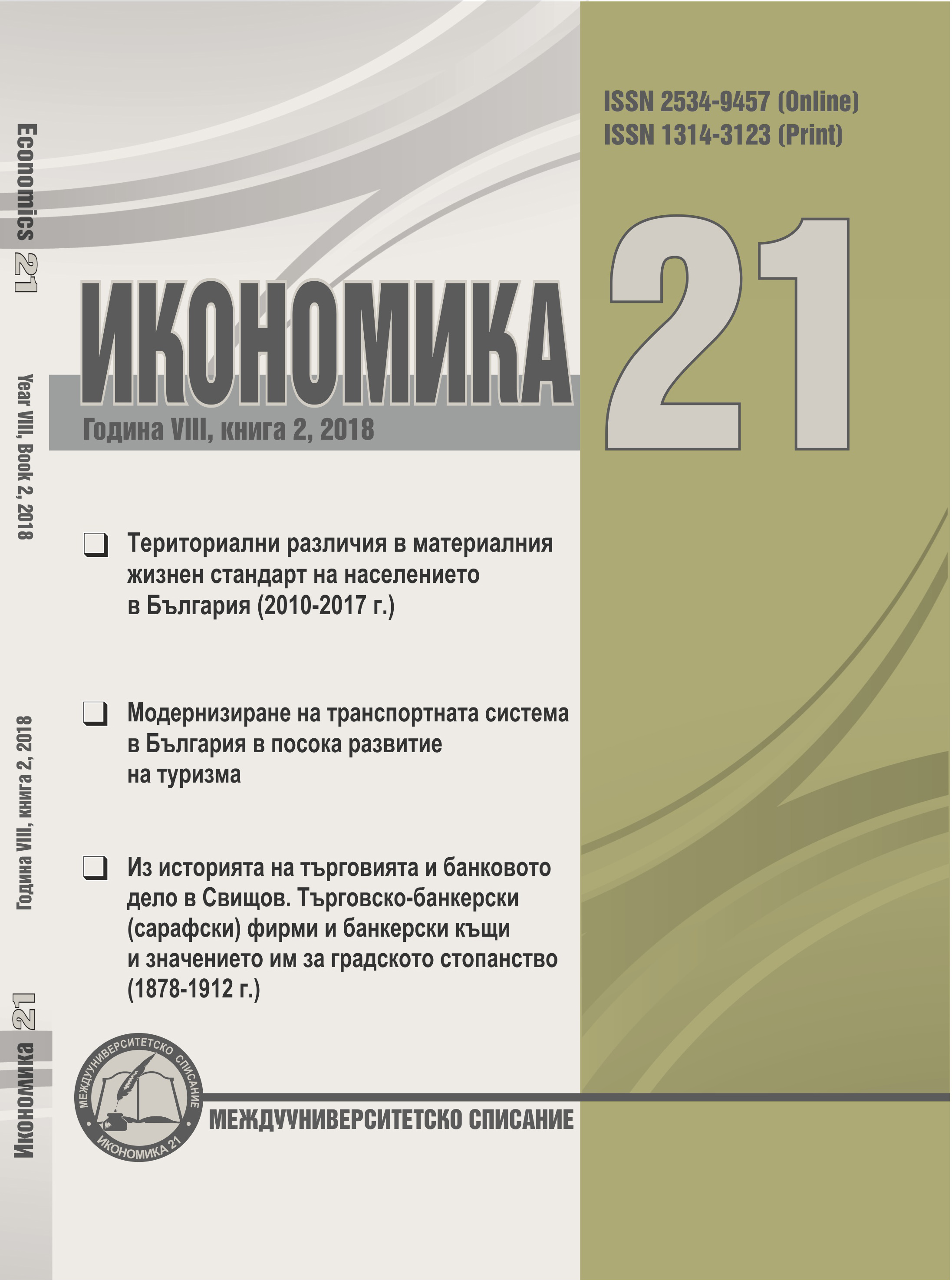ВЪЗДЕЙСТВИЕ НА ПАЗАРНИТЕ, ЧАСТНИТЕ, КОЛЕКТИВНИТЕ И ХИБРИДНИТЕ ФОРМИ НА УПРАВЛЕНИЕ ВЪРХУ АГРАРНАТА УСТОЙЧИВОСТ В БЪЛГАРИЯ
THE IMPACT OF MARKET, PRIVATE, COLLECTIVE AND HYBRID MODES OF GOVERNANCE ON AGRARIAN SUSTAINABILITY IN BULGARIA
Author(s): Hrabrin BashevSubject(s): Economy, Business Economy / Management
Published by: Стопанска академия »Д. А. Ценов«
Keywords: agrarian governance; sustainability; market; private; collective; hybrid modes.
Summary/Abstract: The specific governance systems in different countries, regions, sectors, etc., are a factor which largely (pre)determines the rate and type of socioeconomic development. Despite its tremendous theoretical and practical significance, little empirical research has been conducted in Bulgaria, and south Eastern countries in general, of the dominant governance structures in agriculture and their impact on agrarian sustainability. The aim of this study is to adapt the interdisciplinary New institutional economics and to assess the impact which the different modes of governance (market, private, collective, public and hybrid) have upon agrarian sustainability at the current stage of development of our country. The study first presents the methodology of the research. Next, typical governance modes are identified that are employed by Bulgarian farms of different legal type, size, production specialization, environmental position and geographical location, the impact of those governance modes on agrarian sustainability in its economic, social and environmental aspects. In conclusion, recommendations are made about conducting further research and improving public policies and private governance strategies. Agricultural producers employ various combinations of efficient market, private, collective and hybrid modes of governance in their activity and relationships. The factors and modes which contribute the most to raising agrarian sustainability at this stage are: managers’ confidence and initiatives; economic resources and innovation potential; a short-term profit and gains strategy; price level and dynamics; EU payments per area, and informal agreements. The research of the relationship between governance structures and agrarian sustainability should continue further to improve its representativeness and enlarge the scope of the specific modes of governance which farms of different types employ, to assess the impact of institutions upon agrarian sustainability and the effect of governance at different hierarchical levels. The latter, however, requires employing a new type of micro and macro data and close cooperation between different stakeholders.
Journal: Икономика 21
- Issue Year: 8/2018
- Issue No: 2-BG
- Page Range: 131-176
- Page Count: 46
- Language: Bulgarian

